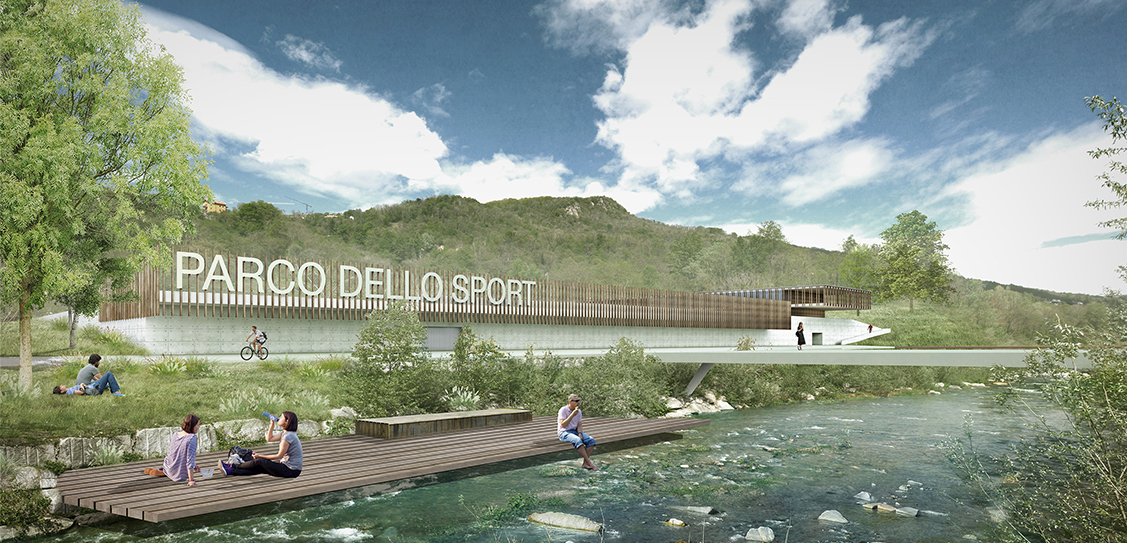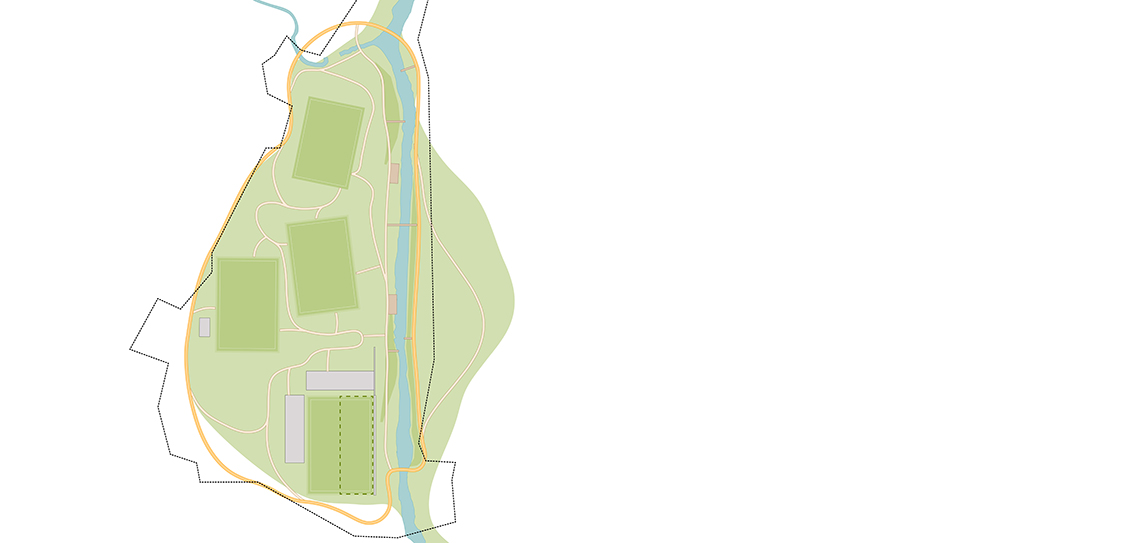On 2 June 2020 the Lugano Municipal Council gave the go-ahead for the planning of the new Pole of Sports and Events (PSE). The decision indicated the direction for the planning of public spaces in the post-pandemic era: it is necessary to plan on the basis of renewed awareness, with health, sport and sustainability at the forefront, in line with the United Nations Sustainable Development Goals.
The strategic value of the PSE has been deemed important as an element of social aggregation, which is necessary for the FC Lugano football club but also for the city’s companies and young people involved in sport.
Within the framework of the relaunch of sports projects, the earmarking of credit by the Municipal Authority is a green light for the Parco dell Sport Al Maglio, an innovative project of sustainability and urban regeneration was presented by LAND Suisse with Orsi & Associati and the Studio Ingegneria Lepori in 2019.
There was a need to create a new stadium for Lugano to replace a structure that was obsolete and inadequate in terms of safety and the development of the sports sector in Lugano. The Parco dello Sport was conceived with the aim of enhancing the entire Maglio urban area and bringing an abandoned peripheral ward back to life, turning it into a destination of wellbeing for all citizens in a renewed context of urban landscape.
The desire to restore to health and revitalise a run-down area, together with the need to build the sports infrastructures, has prompted our group to develop the concept of an integrated sports park. In this project the naturalistic and landscape components are associated harmoniously with the built components, giving rise to a single large sports and recreational area that we have called the Parco dell Sport.
Stretching over an area of around 100,000 sq m, the project envisages the creation of a multi-purpose Palazzetto dello Sport, closely connected to the main football field and performing the function of a “link” between various levels of the territory. Organising the theme of connection on an urban scale, the Parco Al Maglio succeeds in closely relating together characterising elements of the territory that, outside of this unitary design, would not have functional affinities: the course of the River Cassarate, a wide, calm and sun-kissed stretch of water, various walkways going from the City to the surrounding woods, contact with the nearby Municipality of Canobbio.
The project for the Parco dello Sport Al Maglio is presented as a conceptual and project-related ring of conjunction of the Raggio Verde del Cassarate, the major urban regeneration plan that develops the territorial connection and the reactivation of the environmental, landscape and social connections along the entire length of the territory traversed by the River Cassarate.
LAND’s Raggi Verdi, Green Rays, strategy, conceptualised for the first time in Milan in 2003 and subsequently extended across the frontier, responds to the need to consider the relationship between city, citizens and nature to favour a new reading of the landscape as a living and productive organism. The reactivation of the naturalistic elements, together with the creation of permeable connections and liveable spaces, becomes the fertile terrain on which to cultivate a new urban ecosystem: sustainable and regenerative from the ecological and economic-social perspectives.
The Parco dello Sport fits within the context of the urban ecosystem with the intention of creating a large natural meadow, spread around inside which there is plenty of free space for the sports fields and the infrastructures necessary for the sports centre. The sports structures, which are rather rigid and encoded in terms of dimensions and encumbrance, are contrasted with the natural elements of the landscape design (the profile of the escarpments, steps, trees, paths, walkways). The project for the Park extends around the football pitches and embraces the entire perimeter of intervention. Particular attention has been devoted to guaranteeing access to the river bank, integrating these interventions of upgrading of the bank into the broader context of light mobility, both on foot and by bicycle.



